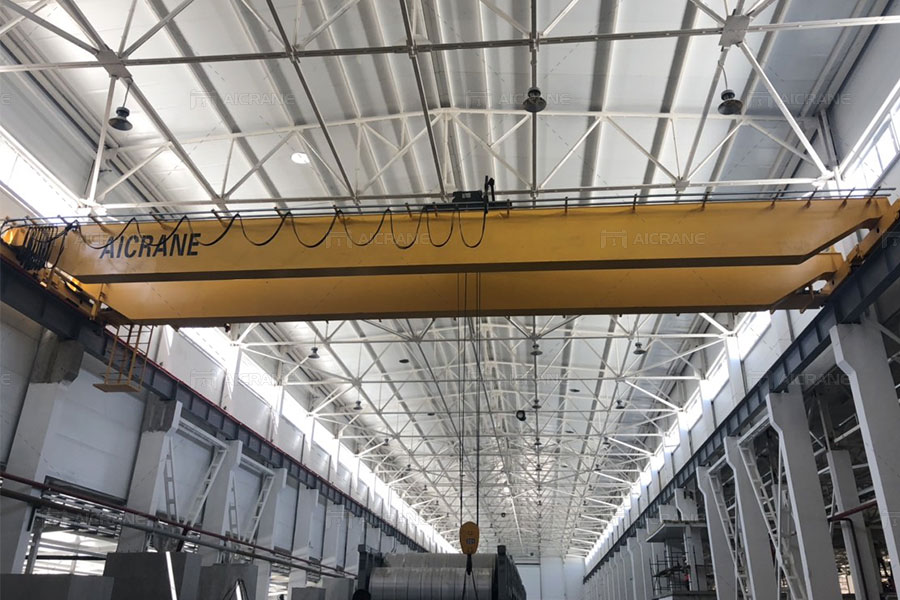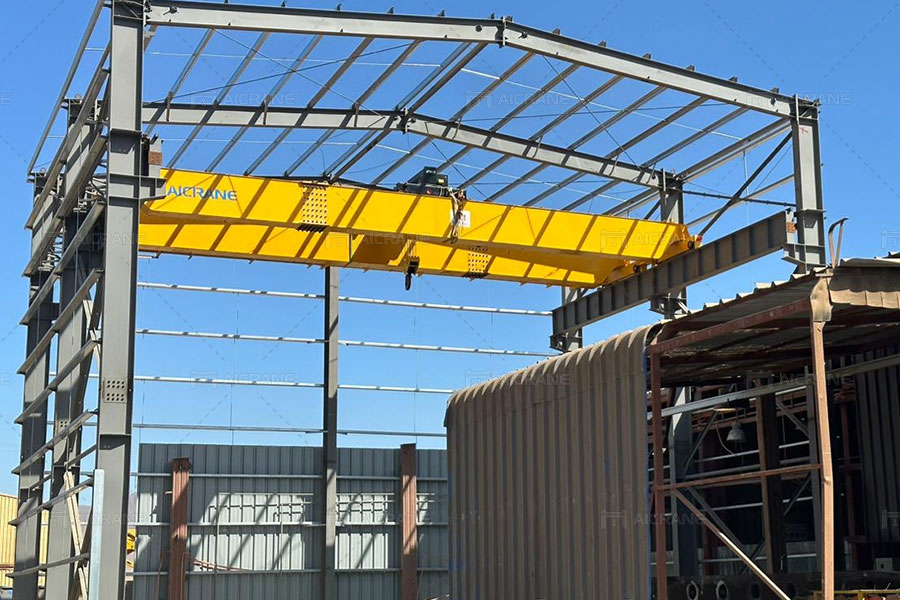Overhead cranes are critical pieces of equipment in many industries, offering high lifting capacities and versatility for handling heavy loads. When purchasing a 30-ton overhead crane, understanding the key specifications is essential to ensure you are selecting a crane that meets your operational requirements and complies with safety standards. A 30-ton crane is often used in industries such as construction, manufacturing, steel mills, warehouses, and ports, where heavy lifting is frequent. This article will explore the most important specifications you should consider to make an informed decision when purchasing a 30-ton overhead crane.

1. Lifting Capacity
The lifting capacity of the crane is one of the most important specifications to consider. A 30 ton overhead crane is designed to lift loads weighing up to 30 tons, but it is important to evaluate the weight range that is typical in your operations. Some overhead cranes may be designed with a slightly higher or lower capacity, offering flexibility depending on the type of loads you handle.
Why It’s Important:
- Safety: Ensure that the crane is rated for the maximum weight that will be lifted to avoid overloading the crane, which can lead to accidents or damage.
- Efficiency: Having the right lifting capacity ensures that the crane operates efficiently without strain on the system, extending the lifespan of the equipment.
2. Span
The span refers to the distance between the crane’s two end trucks, i.e., the distance the crane’s lifting mechanism can travel horizontally. For a 30-ton overhead crane, the span can vary depending on the facility’s requirements and the space available.
Why It’s Important:
- Fit for Purpose: If you’re working in a tight space, a smaller span may be more appropriate. In contrast, a larger span is better suited for more open or expansive facilities, allowing the crane to cover a broader area.
- Clearance: Ensure that the span provides sufficient clearance for loads to pass under, especially in areas with obstructions such as machinery or structural beams.
3. Lift Height
The lift height is the maximum vertical distance that the crane can raise a load. It is an important specification to ensure that the crane can reach the height required for your operations, whether it’s for stacking materials, moving items to higher levels, or reaching overhead structures.
Why It’s Important:
- Operation Scope: The correct lift height is critical for reaching the required load destinations, such as loading docks, storage racks, or mezzanine levels.
- Load Handling: In some industries, it’s important to lift loads to specific heights for safety, such as in construction or steel mills.

4. Type of Overhead Crane
Overhead cranes come in different types, including single girder, double girder, and European-style cranes. For a 30-ton capacity, the choice of type will depend on the space available, load requirements, and lifting speed.
- Single Girder Cranes: These are typically lighter and more cost-effective, suitable for medium-duty tasks and shorter spans.
- Double Girder Cranes: These double girder overhead cranes are more robust, ideal for handling heavier loads and providing longer spans. They also offer greater stability and are typically used for 30-ton capacities and above.
- European Cranes: These cranes are designed according to European standards, offering high efficiency, compact design, and enhanced safety features.
Why It’s Important:
- Design Flexibility: The type of crane affects the overall design and the space required for installation.
- Cost Efficiency: A single girder crane may be sufficient for many applications, offering lower installation and maintenance costs. However, for heavy-duty lifting and longer spans, a double girder crane might be more suitable.
5. Work Duty Classification
The work duty classification defines how often the crane will be used and the intensity of its operations. Overhead cranes are typically categorized into different classes based on their usage frequency and load conditions.
- Class A: Light duty overhead crane (e.g., occasional lifting, low frequency)
- Class B: Moderate duty overhead crane (e.g., intermittent use with medium lifting)
- Class C: Heavy duty overhead crane (e.g., frequent lifting with high loads)
- Class D: Severe duty overhead crane (e.g., continuous operation under tough conditions)
For a 30-ton crane, it is important to choose the appropriate duty class depending on your operational needs.
Why It’s Important:
- Performance: The work duty classification ensures the crane is built to handle your specific workload without failure.
- Longevity: Operating a crane that exceeds or underestimates your duty cycle can lead to excessive wear and tear or inefficiency.
6. Control System
The control system determines how the crane is operated. For a 30-ton crane, options typically include ground control, cabin control, and remote control systems. Some cranes come with a combination of these, allowing greater flexibility in operation.
- Ground Control: Operated via buttons or levers from the ground.
- Cabin Control: Operated from a cabin located on top of the crane, offering better visibility and comfort.
- Remote Control: Allows operators to control the crane from a distance, providing flexibility and enhancing safety.
Why It’s Important:
- Safety and Convenience: The choice of control system impacts the safety of the operator, visibility, and overall ease of use.
- Technology Integration: More advanced control systems may include automation features, load monitoring, and diagnostic capabilities that improve crane operation.
7. Speed of Lifting and Travel
Lifting speed is an important specification that determines how fast the crane can raise and lower loads. Similarly, the travel speed indicates how quickly the crane can move horizontally along the rail. For a 30-ton crane, these speeds can vary based on the application.
- Lifting Speed: This refers to the speed at which the hoist moves the load vertically.
- Travel Speed: The speed at which the crane moves horizontally across its span.
Why It’s Important:
- Productivity: Faster speeds may increase productivity, especially in high-demand environments like manufacturing or warehouses. However, too much speed can lead to instability.
- Control and Precision: In some applications, such as in steel mills, slower lifting speeds may be preferred for better load control.
8. Power Supply and Electrical Requirements
The power supply is an essential specification that determines how the crane will be powered. Most overhead cranes run on electric motors, but some applications may require different power options, including hydraulic or diesel-powered cranes for specific tasks.
- Voltage and Frequency: Check whether the crane operates on standard power supplies (e.g., 380V, 50Hz) or requires special voltage or frequency to meet your facility’s standards.
Why It’s Important:
- Energy Efficiency: Ensure the crane is compatible with your power supply and can run efficiently without excessive energy consumption.
- Compliance: The electrical system must adhere to local electrical codes and regulations for safety and performance.
9. Safety Features
Safety is paramount when purchasing any overhead crane, and for a 30-ton crane, it is even more crucial. Key safety features to consider include:
- Overload Protection: Prevents the crane from lifting more than its rated capacity.
- Limit Switches: Ensures the crane does not exceed its operating range.
- Anti-Sway Systems: Reduces load swinging, enhancing safety and precision.
- Emergency Stop: Instantly halts the crane in case of an emergency.
Why It’s Important:
- Risk Mitigation: Safety features minimize the risk of accidents and injuries.
- Compliance: Many regions have strict safety regulations for cranes, and selecting a crane with these features ensures compliance.
10. Maintenance and After-Sales Support
When purchasing a 30-ton overhead crane, consider the long-term costs associated with maintenance and the availability of after-sales support. Some bridge crane manufacturers provide comprehensive service packages that include regular inspections, parts replacement, and remote troubleshooting.
Why It’s Important:
- Operational Efficiency: Regular maintenance ensures the crane operates smoothly, reducing downtime and improving efficiency.
- Longevity: Proper maintenance extends the life of the crane, protecting your investment.
- Support Availability: Ensure that the manufacturer or supplier provides reliable after-sales support, including access to spare parts and technical assistance.
Conclusion
Purchasing a 30-ton overhead crane involves understanding several critical specifications, including lifting capacity, span, lift height, type, work duty classification, control system, speed, power supply, safety features, and after-sales support. By thoroughly considering these specifications and selecting a crane tailored to your specific needs, you can maximize efficiency, safety, and reliability in your operations. Always consult with a reputable crane manufacturer or supplier to ensure that your 30-ton overhead crane meets all relevant industry standards and performance expectations.